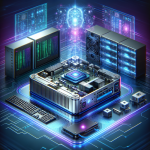
Strategic Hiring Surge in Engineering for AI Products
Strategic Hiring Surge in Engineering for AI Products
In recent years, the rapid evolution of artificial intelligence (AI) technologies has dramatically reshaped the engineering landscape. Companies are now faced with the challenge—and opportunity—of significantly expanding their engineering teams to keep pace with the burgeoning demand for AI-driven products. This tutorial will delve into the current trends in strategic hiring, highlight essential skills required in the AI field, and provide a step-by-step approach for effectively building a high-performing engineering team.
Prerequisites
- A basic understanding of AI technologies and their applications
- Insights into the needs of your organization and the products you’re developing
- A clear vision for your team structure and roles
1. Understanding the AI Product Landscape
Before embarking on a hiring spree, it is crucial to understand the specific AI products your organization aims to develop. Different products may require varying technical expertise. Some roles to consider include:
- Data Scientists: Experts in machine learning and statistical analysis to derive insights from vast datasets.
- Machine Learning Engineers: Professionals specializing in designing algorithms and robust ML models.
- AI Research Scientists: Innovators focused on advancing AI technologies and methodologies.
- Software Engineers: Developers skilled in building the applications that leverage AI technologies.
2. Defining Job Descriptions and Roles
Clearly defined job descriptions are essential for attracting the right candidates. Here are some key aspects to consider:
- Skills and Experience: Specify the necessary programming languages, frameworks, and methodologies the candidate should be familiar with.
- Team Dynamics: Describe how the role fits within the larger engineering team and the company’s overall goals.
- Culture Fit: What attributes will help a candidate thrive in your organization’s unique environment?
3. Sourcing Top Talent
Once you have clearly outlined job requirements, it’s time to start sourcing candidates:
- Networking: Attend industry conferences, workshops, and tech meetups to meet potential hires.
- Online Platforms: Utilize professional networks such as LinkedIn or GitHub to discover talented engineers.
- Referrals: Leverage your current employees’ networks for trusted recommendations.
4. The Hiring Process
The hiring process should be both thorough and efficient to secure the best talent:
- Initial Screening: Perform resume reviews to filter candidates who meet the basic requirements.
- Technical Assessments: Conduct coding challenges or technical interviews relevant to the roles applied for.
- Behavioral Interviews: Assess candidates’ cultural fit and mindset through situational questions.
- Feedback Loop: Maintain a quick feedback mechanism both for candidates and interviewers to avoid losing top talent.
5. Onboarding Effectively
After hiring the right candidates, it’s imperative to ensure they’re set up for success from day one:
- Onboarding Program: Develop a structured onboarding program that includes introductions to team members, training on tools, and understanding company culture.
- Clear Expectations: Outline the performance expectations and initial projects to help new hires acclimate.
- Continuous Check-Ins: Schedule regular one-on-ones to address any questions or concerns during their transition.
Troubleshooting Common Hiring Challenges
As with any strategic initiative, challenges may arise during the hiring process:
- High Competition: Establish a competitive compensation package and unique employee benefits to attract potential candidates.
- Cultural Misalignment: Use cultural fit interviews to gauge if candidates share the company’s values.
- Retention Rate: Foster an engaging work environment that prioritizes employee well-being and career growth.
Conclusion and Summary Checklist
To summarize, a strategic hiring surge in engineering for AI products involves:
- Understanding the AI landscape in relation to your organization’s goals.
- Defining clear job descriptions and sourcing candidates via multiple channels.
- Executing a thorough hiring process, paired with effective onboarding.
- Troubleshooting potential challenges to retain talent.
By focusing on these components, your organization can build a robust engineering team that drives innovation in AI products. For more insights on hiring strategies, check out our recent post on Multi-Billion Dollar Investment Plan in AI Infrastructure.














